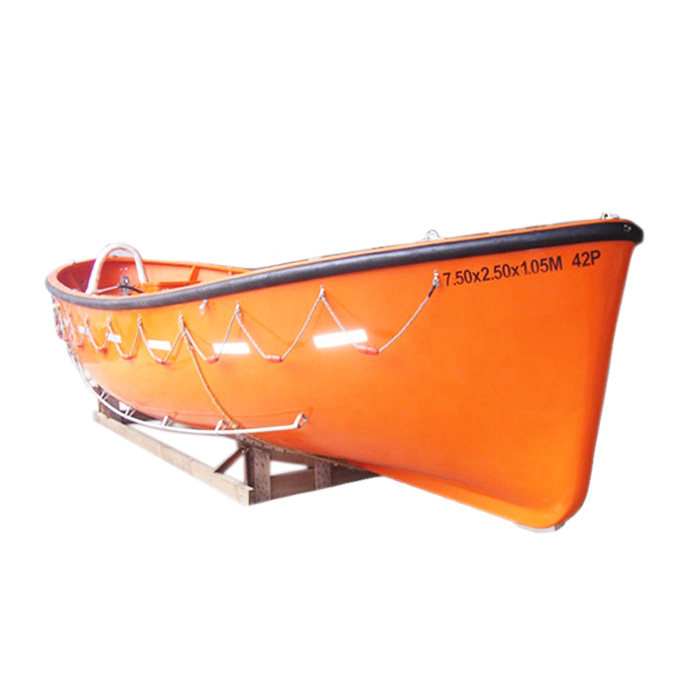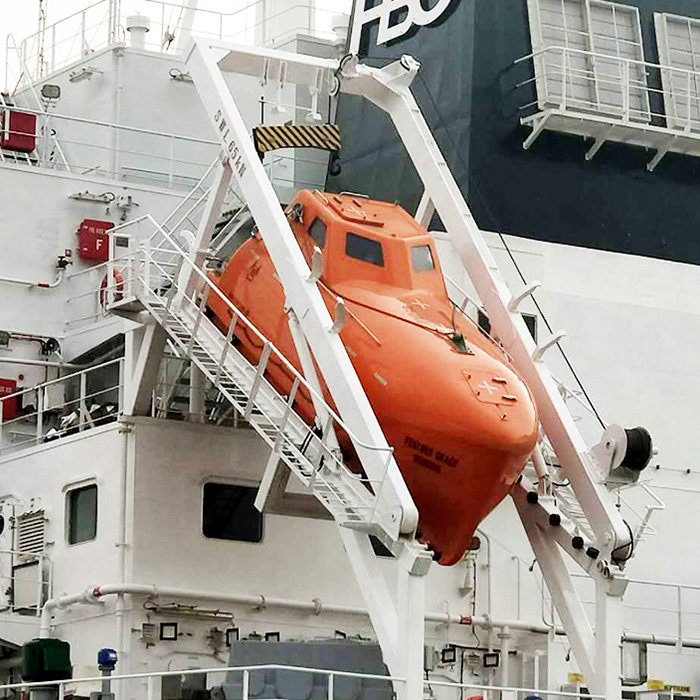Exploring the Pivotal Role of Lifeboats in Maritime Safety
Lifeboats are indispensable vessels created with a singular mission – to rescue and protect lives in emergency situations at sea. Whether it's a shipwreck, a maritime catastrophe, or a search-and-rescue operation, these uncelebrated marine heroes have saved innumerable lives. In this article, we will delve into the pivotal role that lifeboats play in maritime safety, examining their construction materials, design, and features.

Commonly Used Construction Materials for Lifeboats:
Lifeboats are constructed using materials carefully chosen for their durability, buoyancy, and resistance to the harsh conditions of the sea. Common materials used in lifeboat construction include:
Fiberglass: Fiberglass-reinforced composite materials are popular for lifeboat construction due to their lightweight nature, high strength-to-weight ratio, and corrosion resistance. Fiberglass lifeboats are renowned for their resilience and ability to withstand challenging marine environments.
Aluminum: Aluminum lifeboats are favored for their lightweight yet robust construction. They exhibit high resistance to corrosion, making them ideal for use in saltwater environments. Aluminum lifeboats are commonly employed on offshore facilities and smaller vessels.
Steel: Steel lifeboats are noted for their ruggedness and durability. They are capable of handling heavy-duty applications and are frequently used on larger vessels and cargo ships. Steel lifeboats are less susceptible to damage from accidents or severe seas.
Inflatable Materials: Some lifeboats are designed as rigid inflatable boats (RIBs) or inflatable life rafts. These typically feature an inflatable buoyancy tube and a rigid, lightweight structure made from materials like fiberglass or aluminum. Inflatable lifeboats are celebrated for their buoyancy and stability.

GRP (Glass Reinforced Plastic): GRP lifeboats are lightweight and durable. They exhibit resistance to corrosion and offer good buoyancy. GRP is often used for smaller lifeboats or rescue boats.
Wood: Traditional wooden lifeboats, owing to their vulnerability to rot and deterioration in harsh marine conditions, have been largely replaced by more modern materials. However, some older vessels may still retain wooden lifeboats.
Polyethylene: HDPE (High-Density Polyethylene) is occasionally employed in the construction of smaller lifeboats and life rafts. HDPE is known for its durability and resistance to impact and chemicals.
Design and Features of Lifeboats:
Lifeboats are meticulously designed to ensure maximum safety and efficiency. Key design elements and features include:
Buoyancy and Stability: Lifeboats are engineered to remain buoyant and stable, even in challenging conditions. They must navigate rough seas while keeping occupants safe.
Self-Righting Capability: Many lifeboats are equipped with self-righting mechanisms that automatically return them to an upright position if capsized.
Capacity: Lifeboats come in various sizes and are designed to accommodate a specific number of passengers, often in adherence to international maritime regulations.
Safety Equipment: Lifeboats are typically equipped with essential safety gear, including life jackets, lifebuoys, flares, and communication devices, ensuring the well-being of those on board.
Visibility and Signaling: They are outfitted with bright, reflective colors and lighting to enhance visibility at sea, especially in adverse weather conditions.

The Importance of Lifeboats in Maritime Safety:
Rescue Operations: Lifeboats serve as the first responders in maritime emergencies, providing safe evacuation and rescuing passengers and crew from sinking ships.
Search and Rescue: They are frequently deployed in search-and-rescue missions to locate and recover individuals who have gone missing at sea.
Providing Shelter: In the event of shipwrecks or maritime disasters, lifeboats offer temporary shelter, protecting occupants from inclement weather and sea conditions.
Safety Training: Regular lifeboat drills and training are conducted on ships to prepare crew members and passengers for emergency situations.
Humanitarian Missions: Beyond their primary role, lifeboats have been instrumental in humanitarian efforts, aiding in the rescue of refugees and victims of natural disasters at sea.
Conclusion:
In times of marine peril, lifeboats stand as beacons of hope, a testament to human ingenuity and compassion. Their design and capabilities have evolved over time to meet the increasingly complex demands of modern seafaring. Lifeboats save lives and play a pivotal role in ensuring the safety of individuals who venture into the unpredictable vastness of the world's oceans.
- Art
- Causes
- Crafts
- Dance
- Drinks
- Film
- Fitness
- Food
- Giochi
- Gardening
- Health
- Home
- Literature
- Musica
- Networking
- Altre informazioni
- Party
- Religion
- Shopping
- Sports
- Theater
- Wellness


